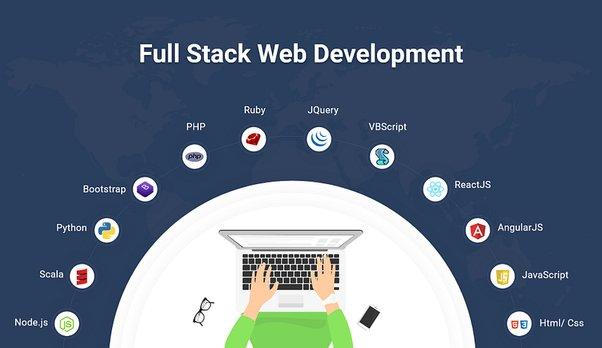What is the roles of a full stack web developer?

A full-stack web developer is a versatile software developer responsible for both the front-end (client-side) and back-end (server-side) development of web applications. They manage everything from how a website looks and interacts with users (front-end) to how it functions and stores data behind the scenes (back-end). The role involves working on all layers of an application, ensuring smooth integration and functionality.
Here’s a breakdown of what a full-stack web developer typically does:
1. Front-End Development (Client-Side)
-
User Interface (UI) Design:
Full-stack developers design and build the layout and structure of web pages. This includes ensuring that the UI is both functional and visually appealing. -
Responsive Design:
They ensure that websites and web applications are accessible and look good on all screen sizes (e.g., mobile, tablet, desktop). -
User Experience (UX):
A full-stack developer works to optimize the usability and interactivity of the website. They may use frameworks like React, Vue.js, or Angular to create dynamic and responsive web pages.
2. Back-End Development (Server-Side)
-
Server Management:
Full-stack developers set up and manage the servers that host the website or application. This includes managing server environments, ensuring performance, and maintaining the server. -
Database Management:
They work with databases to store, retrieve, and manipulate data (e.g., MySQL, PostgreSQL, MongoDB). This involves creating and managing queries and handling complex data structures. -
API Development:
Full-stack developers build and integrate APIs (Application Programming Interfaces) that allow the front-end to communicate with the back-end. They may work with RESTful APIs or GraphQL.
3. Integration Between Front-End and Back-End
-
Connecting Front-End and Back-End:
Full-stack developers ensure that data can flow seamlessly between the client-side and server-side, often using technologies like AJAX, Fetch API, or WebSockets for real-time communication. -
Authentication & Authorization:
They implement secure authentication methods, such as login systems, using JWT, OAuth, or other security protocols.
Know more- Full Stack Classes in Pune
4. Deployment and Maintenance
-
Deployment:
Full-stack developers are responsible for deploying the web application to a production server. They may use platforms like AWS, Google Cloud, Netlify, or Heroku to manage hosting and continuous deployment. -
Maintenance:
After deployment, they handle ongoing maintenance, which includes bug fixes, performance optimizations, security patches, and updating dependencies.
5. Collaboration and Communication
-
Cross-Functional Collaboration:
Full-stack developers often work closely with other developers, designers, project managers, and stakeholders to ensure that the product meets all requirements and specifications. -
Problem-Solving:
Full-stack developers are often called upon to troubleshoot and solve a wide range of issues across both front-end and back-end systems, ensuring smooth user experiences and high performance.
6. Code Quality and Documentation
-
Version Control:
They use version control systems like Git to track changes to the codebase and collaborate with other developers. -
Testing:
Full-stack developers write unit tests, integration tests, and conduct quality assurance (QA) to ensure that both the front-end and back-end are working as expected. -
Documentation:
They document the code and systems they build to make it easier for other developers to understand and maintain the project.
Know more- Full Stack Developer Course in Pune
Key Responsibilities of a Full-Stack Developer
- Building and maintaining both front-end and back-end components of a web application.
- Ensuring the responsiveness and performance of applications across different devices and platforms.
- Writing efficient, reusable, and scalable code.
- Troubleshooting issues across both the front-end and back-end of the system.
- Collaborating with other team members (e.g., designers, back-end developers, project managers) to ensure timely delivery of the project.
- Managing and optimizing databases and server configurations.
Skills and Technologies Full-Stack Developers Use
- Front-End: HTML, CSS, JavaScript, React, Vue.js, Angular.
- Back-End: Node.js, Express, Django, Flask, Ruby on Rails, Java, or PHP.
- Databases: MySQL, PostgreSQL, MongoDB.
- Version Control: Git, GitHub.
- Deployment: Heroku, AWS, Azure, Docker.
- API Development: RESTful APIs, GraphQL, WebSockets.
Know more- Full Stack Training in Pune
- Art
- Causes
- Crafts
- Dance
- Drinks
- Film
- Fitness
- Food
- Games
- Gardening
- Health
- Home
- Literature
- Music
- Networking
- Other
- Party
- Religion
- Shopping
- Sports
- Theater
- Wellness


